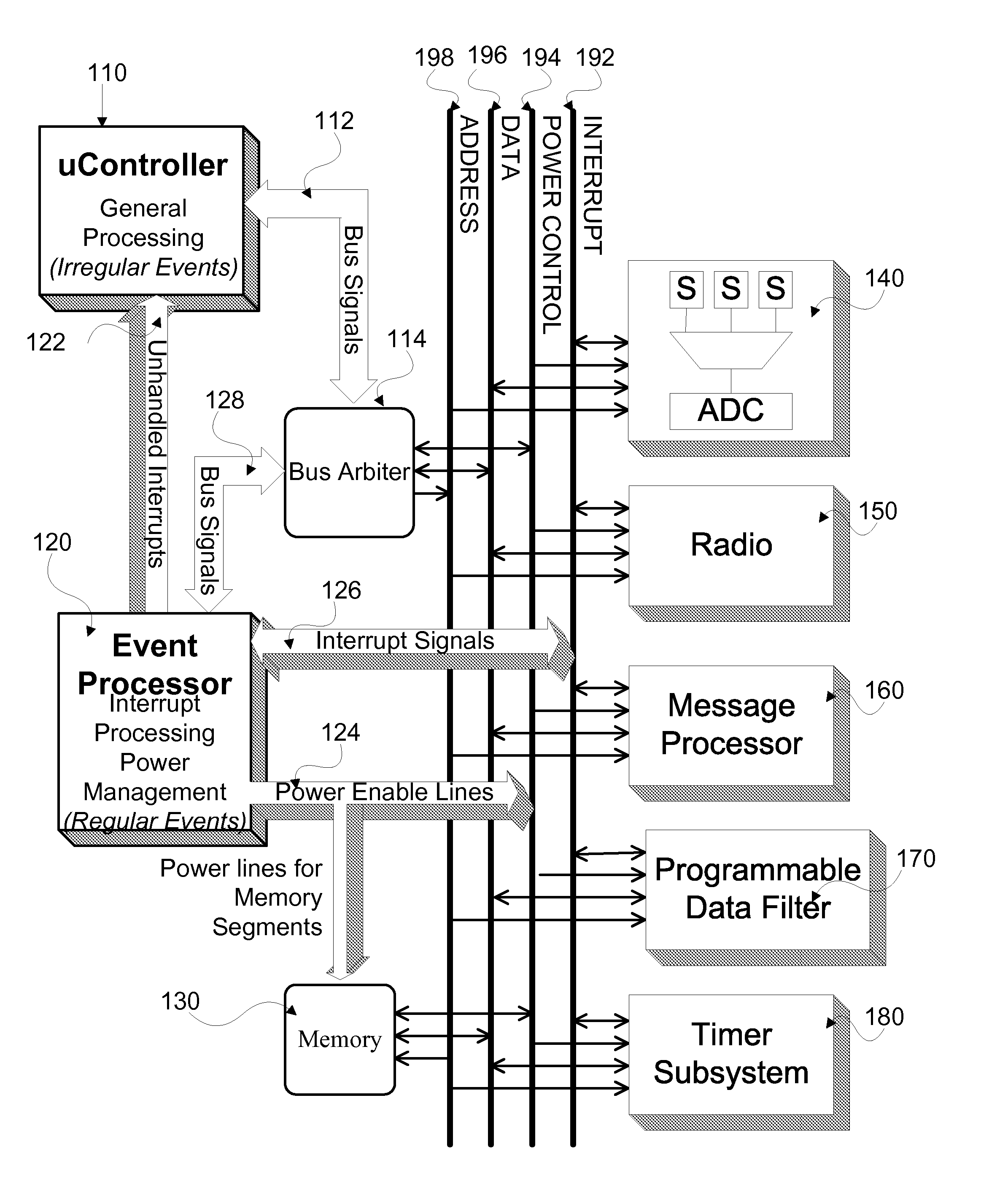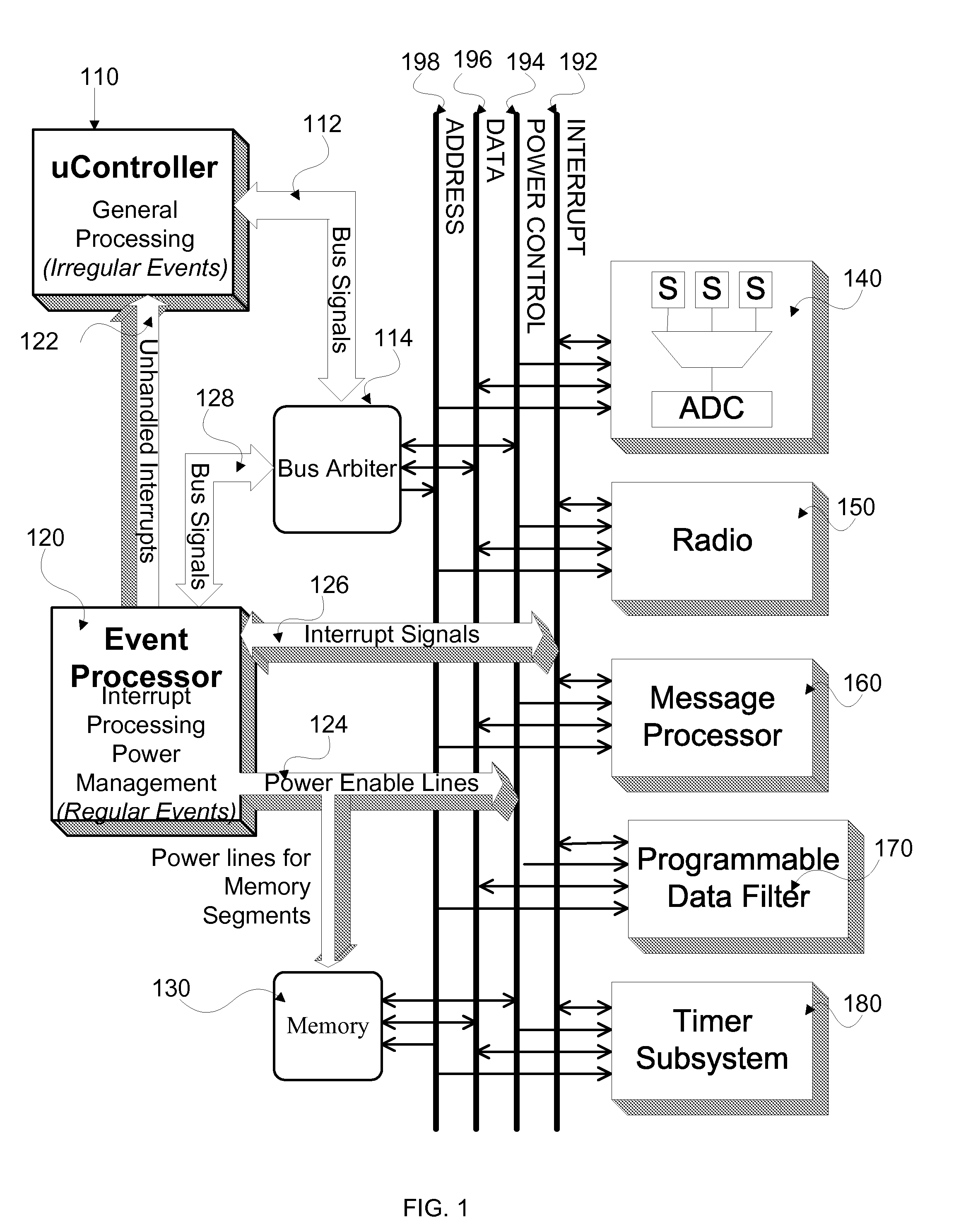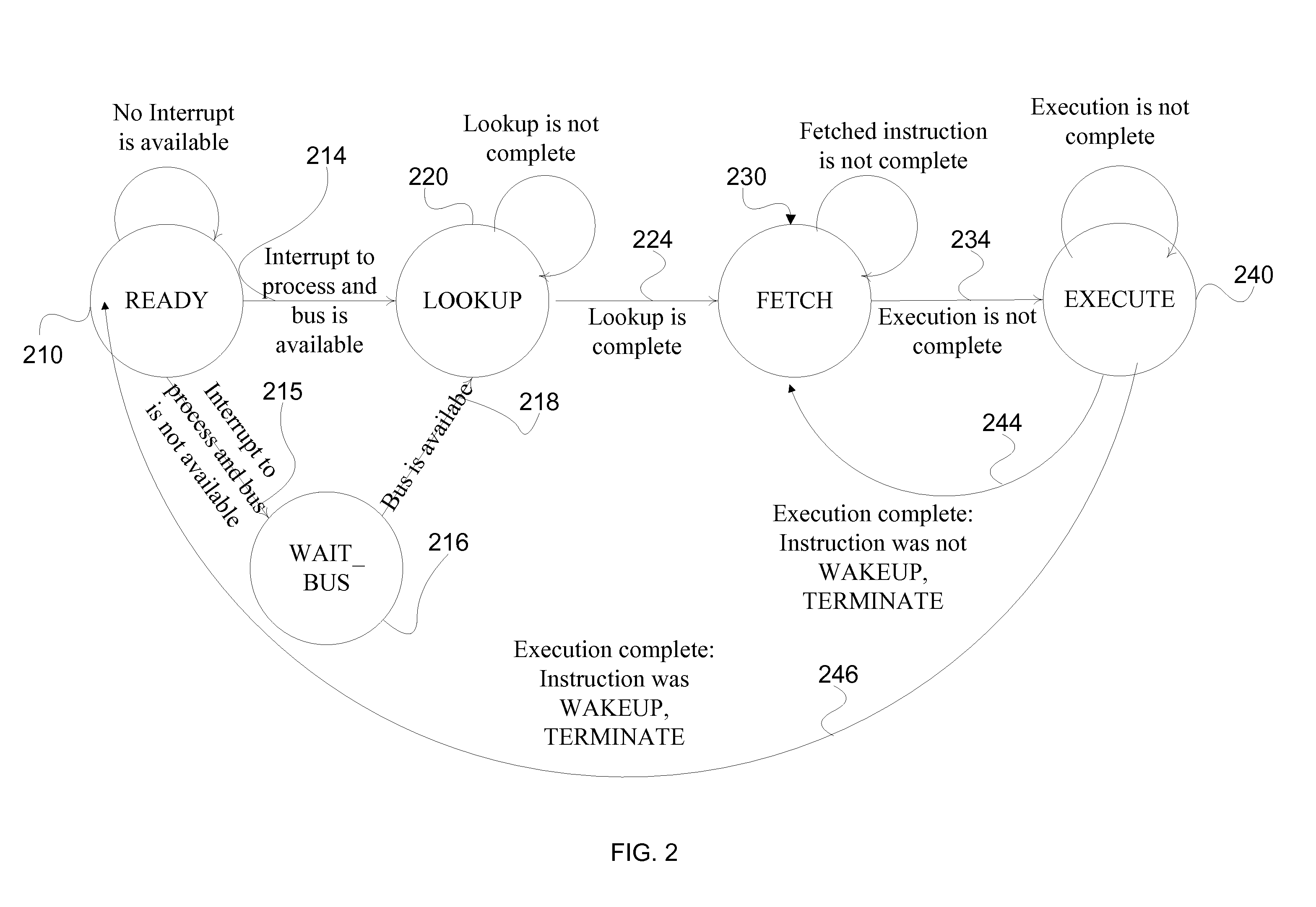Ultra low power system for sensor network applications
a sensor network and ultra-low power technology, applied in the direction of power management, high-level techniques, instruments, etc., can solve the problems of limited application space, unable to meet the needs of users, and built using commodity chips, so as to achieve sufficient performance, reduce clock rates, and reduce the effect of cycle counts
- Summary
- Abstract
- Description
- Claims
- Application Information
AI Technical Summary
Benefits of technology
Problems solved by technology
Method used
Image
Examples
Embodiment Construction
[0019] In contrast to the prior systems, the present invention seeks to fully leverage the event-driven nature of applications in the design of next generation low-power sensor network nodes. Scavenging energy from the environment and using this energy to power the sensor network device greatly increases the effective lifetime of a wireless sensor node.
[0020] There are many sources of energy available in the environment such as solar, vibration, and electromagnetic radiation, and researchers have developed techniques to harness this energy (S. Roundy, P. K. Wright, and J. Rabaey, “A study of low level vibrations as a power source for wireless sensor nodes,”Computer Communications, 26(1):1131-1144, July 2003 ). For example, vibrational energy can be translated into electrical energy through piezoelectric materials that induce an open circuit voltage when placed under mechanical stress. While using vibration as an energy source is promising, the power output is limited to the order o...
PUM
 Login to View More
Login to View More Abstract
Description
Claims
Application Information
 Login to View More
Login to View More - R&D
- Intellectual Property
- Life Sciences
- Materials
- Tech Scout
- Unparalleled Data Quality
- Higher Quality Content
- 60% Fewer Hallucinations
Browse by: Latest US Patents, China's latest patents, Technical Efficacy Thesaurus, Application Domain, Technology Topic, Popular Technical Reports.
© 2025 PatSnap. All rights reserved.Legal|Privacy policy|Modern Slavery Act Transparency Statement|Sitemap|About US| Contact US: help@patsnap.com



